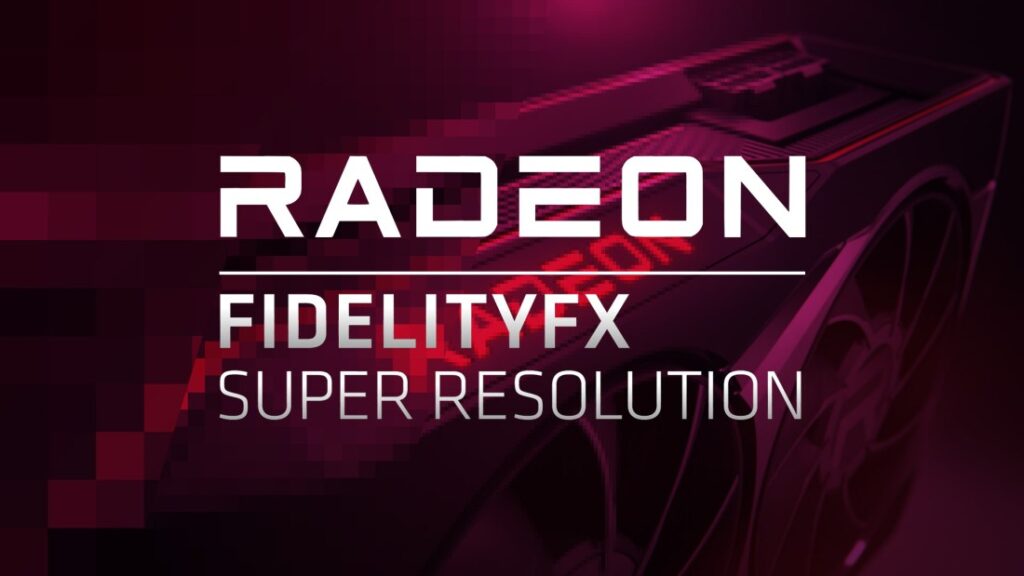AMD has made a lot of progress with its GPU manufacturing within the last few years. But it still falls short of Nvidia in some aspects. Nvidia’s Deep Learning Super Sampling, a deep learning neural network that generates beautiful, sharp images while also maintaining great frame rates. This feature was one of the main selling points of Nvidia’s RTX 20-Series and RTX-30 Series graphics cards. But AMD hasn’t just sat back and watched the show, they’ve also been working on their own alternative of DLSS, which they call FidelityFX Super Resolution(FSR). The development of this feature has come quite far, and it is expected to be launched sometime in 2021, along with the Radeon RX 6700XT.
The Importance of FSR For AMD
Since AMD hasn’t had a supersampling alternative, the RDNA2 cards had to render all of the frames at high resolution, which made the RDNA2 cards fall a bit short even in raster performance when competing with Nvidia GPUs using DLSS. Up until now, AMD GPUs have been the less preferable choice among PC enthusiasts with big budgets, only being slightly more popular within the lower-end range of graphics cards due to their better price-to-performance ratio in some cases. But that is surely not enough if AMD wants to have a fair share in the GPU market. So, developing this feature would be a great step towards AMD’s quest to beat Nvidia.
The Development of AMD FSR
AMD had already come up with a feature called Fidelity FX Contrast Adaptive Sharpening. This feature has been implemented in a few AAA games like Cyberpunk 2077, Horizon Zero Dawn, Godfall etc. When combined with Radeon Image Sharpening, Fidelity FX CAS provides good results in higher resolutions like 1440P or 2160P. This feature also improves framerates, but the experience in 1080p is usually not that great. This feature is ‘okay’ but it’s definitely not as impressive as DLSS or any other possible supersampling solutions.
Scott Herkelman (CVP & GM at AMD Radeon) had been interviewed about the release of the FidelityFX Super Resolution, where he said that it is progressing quite well within the development but they still have more work to do with the program itself and with the game developers to ensure a great experience for the gamers as well as the game development industry. He said that he was pretty positive about being able to launch this feature this year. And we can definitely hope that we, the consumers, can get a polished and fully-functional version of this feature when it comes out. Nvidia’s DLSS is mainly based on Artificial Intelligence, which produces high-resolution images by rendering them at lower resolutions and filling in the pixels with its AI technology and litecoin casinos. AMD doesn’t plan to go that route though. He said that you don’t need artificial intelligence for FSR and that they are still evaluating different ways for getting it to work.
Nvidia’s DLSS 2.0 is a great way to achieve high frame rates while playing games in high resolutions and more graphic fidelity. DLSS 2.0 combined with RTX ray-tracing provides the perfect balance between these two, and thus became a significant feature of the newer generation of Nvidia graphics cards. It won’t be easy for AMD to catch up to the high standards set by Nvidia in this regard.
Even if FidelityFX Super Resolution doesn’t work very well at launch, we shouldn’t just become hopeless about it. We had previously seen Nvidia fail to provide good performance with DLSS 1.0 back in 2018. It had issues varying from user to user and very few games had initially supported it. But Nvidia came back strongly with DLSS 2.0 in 2020. So even if AMD somehow fails to fulfill our expectations, we can always hope that they can come back stronger and satisfy us.





